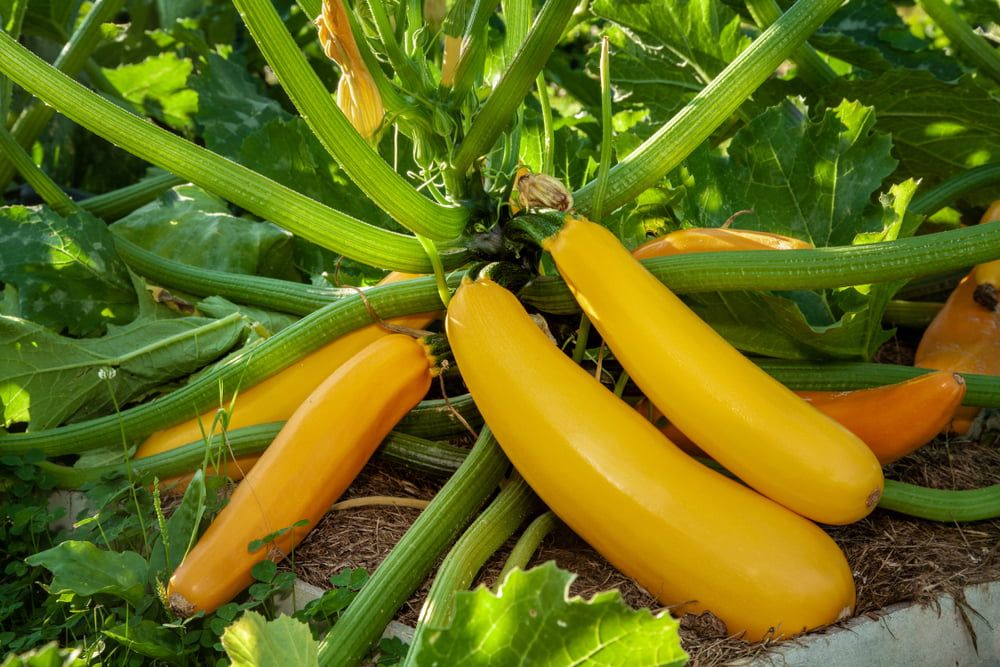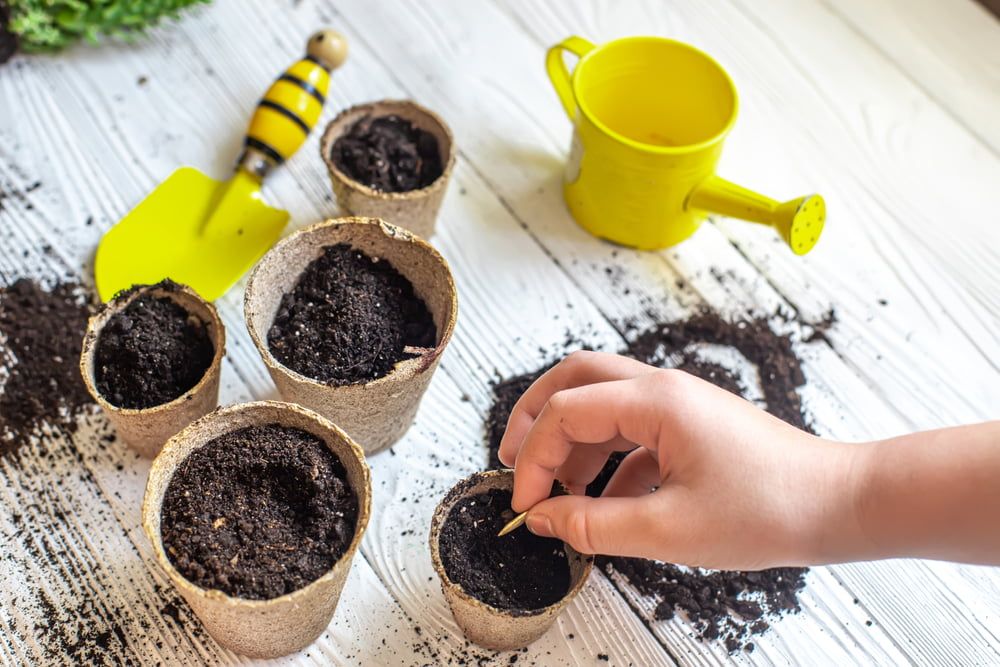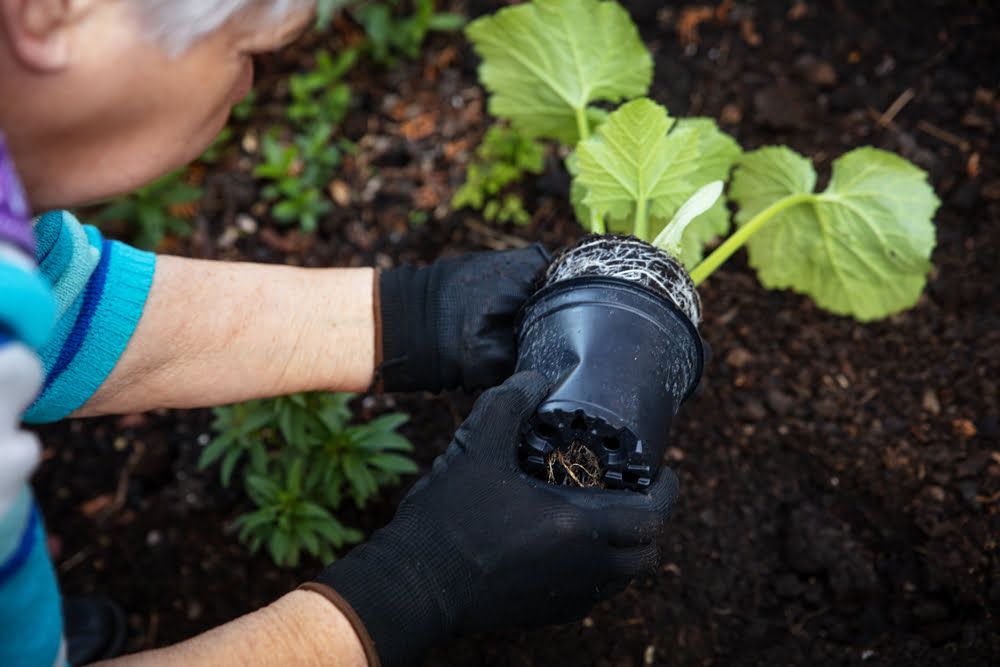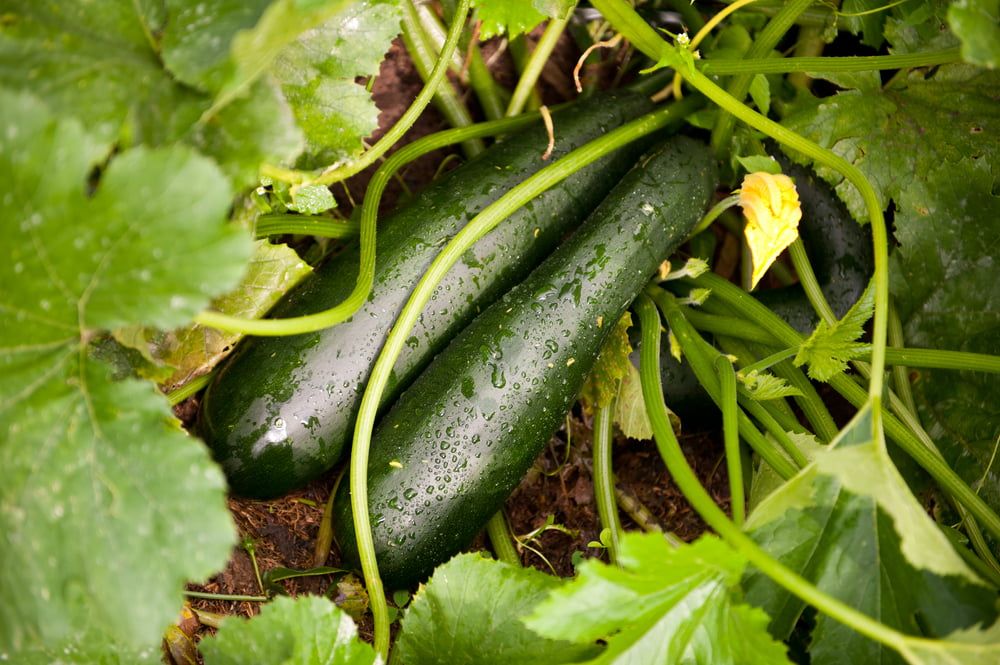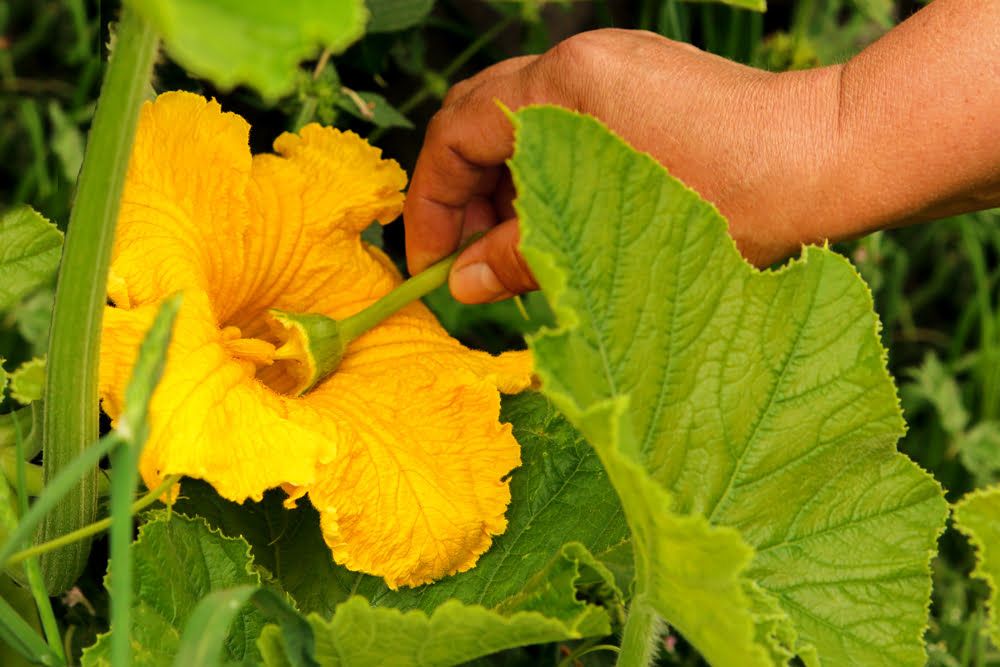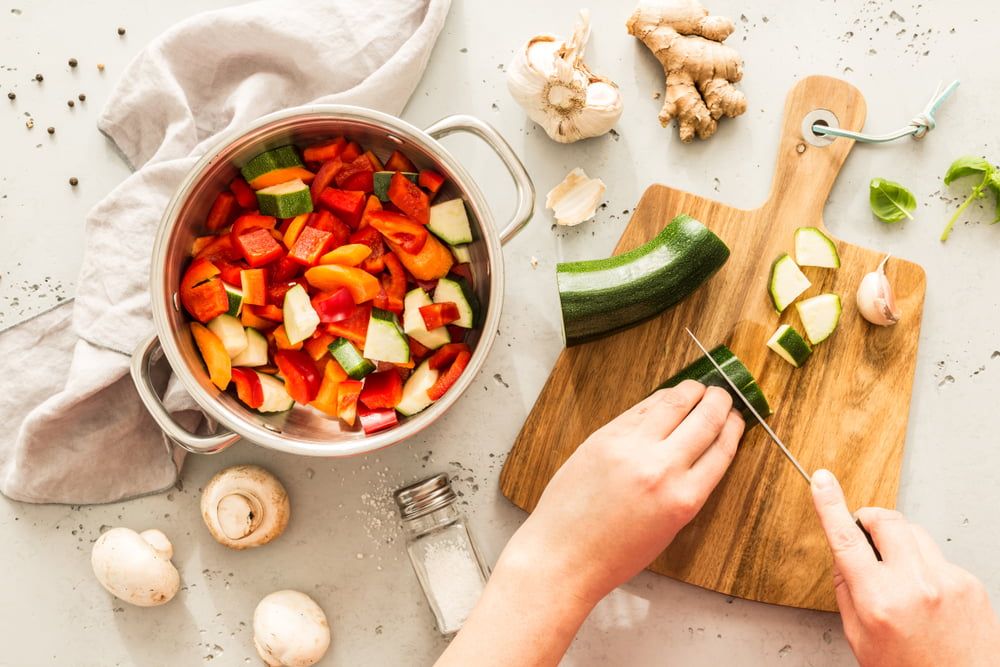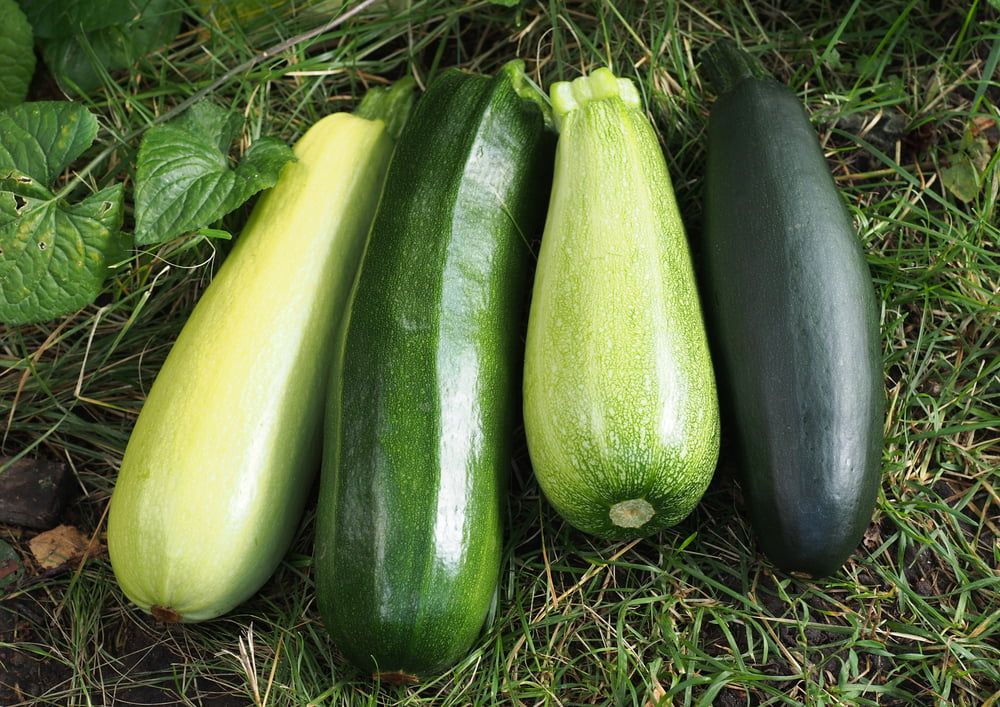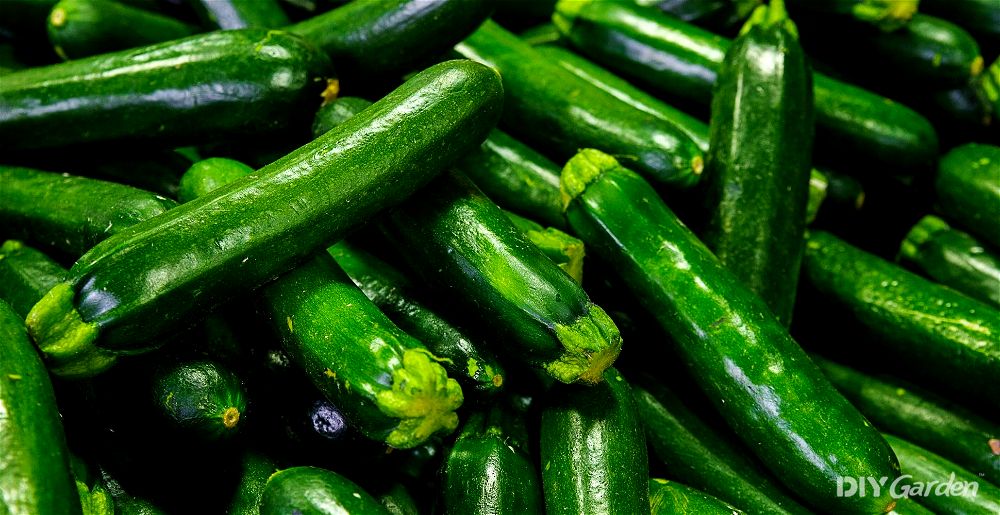
With regular and substantial harvests throughout the summer months, courgettes are one of the most rewarding vegetables to grow. It’s true, you’re likely to end up with a glut towards the end of the season, but be adventurous when it comes to the varieties that you choose and every courgette-based meal will seem exciting!
Growing Courgettes: A Quick Snapshot
When to Sow – Apr-Jun
When to Plant – May-Jun
When to Harvest – Jul-Oct
Average Yield per Plant – 3-5kg
Spacing – 90cm
Depth – 1cm
How to Grow Courgettes at Home
Courgettes are known for being low-maintenance yet highly productive. They can tolerate a variety of growing environments, but, for the very best harvests, try to meet their ideal growing conditions as best as you can.
Growing Conditions for Courgettes
Courgettes need as much sun as possible. Even a small amount of shade could affect your harvests by encouraging excess foliage growth, at the expense of fruit. However, they would still appreciate some shelter from strong winds.
Although courgettes don’t require a particularly rich soil, one that’s full of organic matter would be beneficial. This is why many gardeners plant courgettes over the top of a compost heap – not only does this make use of growing space that would have otherwise gone to waste, but it also provides the plants with all of the nutrients that they need.
Another thing to keep in mind is space – courgettes need a lot of it. The plants have a sprawling habit, although they can be trained to climb vertically instead. If you plan on growing multiple courgette plants but don’t have a large garden, then this is something to consider.
How to Grow Courgettes from Seed
Courgettes are a plant that love the heat and grow very quickly. This means that you’ll need to sow your seeds indoors about a month before your last frost date, so that you can move them outside as soon as possible. From June onwards, courgette seeds can be direct sown outside too, but starting some off indoors gives you an earlier harvest.
How to Sow Courgette Seeds:
- Fill small pots with a multi-purpose compost
- Water well, making sure that excess water is able to freely drain out of the pots
- Make an indentation, about 1cm deep, in the centre of each pot
- Place a courgette seed into each indentation, lying the seed on its side
- Cover back over with compost and lightly water again
- Place the pots somewhere warm. Anything between 13-25°C will allow your courgette seeds to germinate, although germination rates are best at temperatures of around 20°C
Courgette seeds usually have quite a high germination rate. This is why, unlike with many other plants, you only need to sow one seed per pot, rather than multi-sowing and then later thinning out seedlings. However, just in case one or two of your seeds fail to germinate, aim to sow a couple of extra pots.
Caring for Courgette Seedlings
Keep your courgette seedlings consistently moist as they grow. Never allow their soil to dry out, but don’t overwater them either.
It’ll only take about three weeks before your courgette plants outgrow the pots that they’re in. At this stage, it may still be too soon to plant them out, so you’ll need to transplant them into a bigger pot. Don’t allow them to get root bound, as this will only inhibit growth.
How to Plant Courgettes Outside
Young courgette plants can be a little delicate, so make sure that you harden them off for a week or so before planting them out. This allows them to slowly get used to outdoor conditions.
Use this time to prepare your growing area. Thoroughly weed it and, if your soil is poor, mix in some quality compost.
Once you’re ready to get planting, dig holes in the soil large enough to accommodate your courgette plants. Each plant will need about 90cm of space in all directions. However, this does vary depending on variety, as well as if you plan on training them to grow vertically.
Place your plants into their new homes, cover them back over with soil, and then firm down. Once you’re done, sprinkle a granular, general-purpose fertiliser over the top of the soil, before watering well.
How to Plant Courgettes in a Greenhouse
Since courgette plants love the heat, a greenhouse provides a fantastic growing environment. The extra warmth earlier in the year also means that you can direct sow your courgettes into your greenhouse, rather than starting them off indoors. However, if you do still decide to start your seeds off indoors, then plant your seedlings into your greenhouse in the same way that you would plant them outside.
Of course, with courgette plants being quite large, many struggle to find enough space in their greenhouse beds to accommodate them. If this is the case for you, consider growing your courgettes in pots in your greenhouse instead. You’ll need to pick pots that are as deep as possible, since courgette taproots can reach up to 90cm in length.
Another option would be grow bags, which courgettes usually thrive in.
How to Care for Courgettes
Courgettes are generally very low-maintenance, but there are a few key care points that you should be aware of:
Watering Courgettes
Your courgette plants will need about 2.5cm of water a week. This is especially important when the plants start flowering. At this stage, make sure that you’re watering them deeply once a week.
However, instead of watering the plants themselves, focus the water on the soil around them. When courgette foliage gets wet, diseases quickly take hold, making it important to keep those leaves as dry as possible.
Feeding Courgettes
Due to their fast growth rate, courgettes are hungry plants. In addition to applying a granular fertiliser when planting, it would also be a good idea to give your plants a high-potassium fertiliser once a week.
While your plant will still be productive without regular feeds, yields will significantly increase if you consistently fertilise your plants.
Training Courgette Plants to Grow Vertically
If you’d like to save some space in your garden, then train your courgette plants to grow vertically, instead of sprawling across the ground. Here’s how to do that:
- Place some stakes around your courgette plants (three bamboo canes tied together at the top to form a triangle works well), or plant your courgettes near a fence
- As your plants grow, loosely tie the stalks to your stakes (or fence) every few days. Start with the outer stalks before tying the inner stalks, making sure that you lift the leaves out of the way
- Repeat this process a couple of times a week
Weeding and Mulching Courgettes
Just like most other vegetable plants, courgettes don’t do well with competition from weeds. However, let’s face it – weeding can be tedious, especially if you have a large garden.
This is where mulching comes in. Laying a mulch around your courgette plants will not only cut back on the amount of weeding that you need to do, but it’ll also help to keep soil moisture and temperature consist, which your plants will really appreciate.
Courgette Pollination
Courgette plants produce both male and female flowers, with the female flowers eventually turning into fruit. It’s usually easy to tell which flowers are male and female, since the female flowers have a swelling at their base – this is the immature fruit waiting to grow.
However, that fruit will only grow if the flowers are pollinated. This isn’t usually an issue if you’re growing your courgettes outside – bees and other pollinators will naturally be drawn to your plants. Placing pollinator-friendly flowers around your courgettes will help to encourage this even more.
Things aren’t quite so simple if you’re growing your courgettes in a greenhouse. This limits pollinator access, and even bee-friendly flowers may not attract enough pollinators into your greenhouse.
If this is the case, you’ll need to hand-pollinate. Here’s how:
- Pick off a male flower and remove the petals
- Gently touch the pollen from the male flower onto the centres of the female flowers
- Repeat this regularly with all of your courgette plants
How to Harvest Courgettes
Different courgette varieties mature in their own time, making it important to check the average mature fruit size for the variety that you’re growing. Usually, courgettes are picked when they’re about 10-15cm long.
Smaller fruits are tastier, so don’t allow them to grow too big. Plus, the more that you harvest your courgettes, the more productive your plants will be. Be prepared to harvest up to three times a week once your plants really get going.
Since courgette stems are quite thick, avoid pulling at the fruit when harvesting. This could end up damaging the rest of the plant. Instead, use a sharp knife to cut each courgette off, leaving a few centimetres of stem on the fruit.
Harvesting Courgette Flowers
While most people grow courgettes for the fruit, don’t forget that the flowers are edible too! You’ll need to limit how many you pick, since over-picking the flowers will prevent fruit from forming. However, courgette flowers are packed with nutrients and are a popular culinary ingredient in Italy.
If you want to harvest some flowers, do so early in the morning, before the temperatures rise for the day. Courgette flowers close in the heat, so you want to try to pick them before this happens.
Just like when harvesting the fruit, use a sharp knife to cut the flowers off at the stem.
Harvesting Courgettes as Marrows
Towards the end of your growing season, you may want to leave the largest courgette on each plant to grow into a marrow. While specific varieties are usually used to produce marrows, oversized courgettes are classed as marrows too.
Marrows lack the flavour that courgettes boast, but they do have the advantage of storing for much longer.
To harvest marrows, wait until the fruit is about 20cm in length, before cutting them off in the same way that you would a younger courgette.
How to Store Courgettes
Courgettes don’t store particularly well. Whole and unwashed fruits can be placed into a paper bag and then into the fridge, where they’ll keep for a few weeks. However, you’ll notice that their skin starts to shrivel up the longer you store them.
For long-term storage, your best option is freezing your harvest. To do this, wash your courgettes and then either slice them or grate them, depending on how you plan to use your defrosted harvest in the future. Then, blanch the courgettes before placing them into an airtight bag or container, and then storing in the freezer. This way, they’ll keep for several months.
How to Prepare & Cook Courgettes
Since courgettes don’t need to be peeled, they’re extremely easy to prepare. Simply trim off both ends and then either slice, dice, grate, or chop depending on the recipe you’re following.
If you’re growing several courgette plants, then you’ll more than likely end up with a glut mid-summer, leaving you searching for new and exciting ways in which you can use the fruits. Here are a few ideas to keep in mind:
- Courgette and leek soup
- Courgette fritters
- Stuffed and baked courgettes
- Courgette and bean risotto
- Spiralised courgette “noodles”
- Courgette chutney
- Courgette cakes or brownies
- Courgette meatballs
Common Courgette Problems
Courgette plants usually grow without too many problems, especially if you keep them healthy throughout the summer. However, a few potential issues to be aware of are:
- Powdery mildew – one of the most common courgette problems, this fungus leaves a powdery white substance on leaves. Inconsistent watering, plus humidity, is often the cause, so water regularly, make sure that your plants have enough space, and consider applying a mulch
- Rotting ends – although not technically a disease, many experience the flower ends of their courgettes turning brown and soft. To prevent this, remove any flowers from the ends of the fruits once the fruits start to swell
- Slugs and snails – the most common courgette pests, slugs and snails love tender courgette seedlings. Placing a cut large plastic bottle over the top of your seedlings provides a great physical barrier, or you could also arrange some beer traps around your plants
Popular Courgette Varieties to Grow
Some of the tastiest courgette varieties to grow are:
- Early Gem – produces a very early crop that can also be left to mature into flavourful marrows
- Partenon – a highly productive, self-pollinating variety
- Verde di Milano – a compact bush-type variety that’s great for containers or smaller spaces
- Tondo di Piacenza – a high-yielding spherical courgette
- Burpees Golden Zucchini – compact plants that produce large numbers of vividly yellow courgettes
Conclusion
If you look after them properly, your courgette plants will likely be one of the most productive crops in your garden each summer. They’re easy to grow and they tend to fruit heavily, with the fruits being such a versatile ingredient to use in the kitchen., making them a must-have in every vegetable garden.
